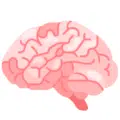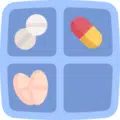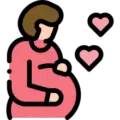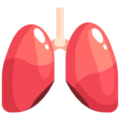Author(s)
Dylan Lindsay, PharmD
Laurie Warrington Fleming, PharmD, BCACP, BC-ADM
Reviewed By
Lauren M. Caldas, PharmD, BCACP
Erin Carson, Pharm.D.
Dawn C. Fuke, PharmD, BCPS
Could automated, web-based cognitive behavioral therapy (CBT) replace flesh-and-blood healthcare practitioners? Can computers deliver healthcare at lower cost and similar quality to face-to-face interactions with humans? Several web-based CBT programs have been developed and are now being marketed directly to consumers. But do they actually work?
According to results of the America Insomnia Survey, up to 50% of adults in the U.S. experience difficulty sleeping. Of those, approximately 20% meet criteria for a clinical diagnosis of insomina per DSM-V criteria.1,2 Combined direct and indirect costs associated with insomnia in the U.S. exceed $100 billion.3 The two treatment options recommended by clinical practice guidelines for chronic insomnia include cognitive behavioral therapy (CBT) and pharmacotherapy.4,5 CBT is the recommended first-line treatment because it has been shown to have longer-lasting results and fewer adverse effects compared to pharmacotherapy. However, CBT accessibility is limited due to cost and lack of trained clinicians.5,6,7,8 Several internet-based trials have sought to demonstrate the efficacy and feasibility of innovative delivery methods for CBT, but have limitations due to small sample sizes and exclusion of patients with comorbid medical and psychiatric disorders.9,10
The Sleep Healthy Using the Internet (SHUTi) study was a single-blind randomized clinical trial comparing the effects of internet-delivered CBT for insomnia (CBT-I) to online patient education. Primary outcomes included improvements in: self-reported Insomnia Severity Index (ISI) scores as well as sleep diary-derived values for sleep-onset latency (SOL) and wake after sleep onset (WASO). Secondary study outcomes included: sleep efficiency, number of awakenings, sleep quality, and total sleep time. See Table 1. It was hypothesized that patients enrolled in the CBT-I arm of the study would demonstrate greater improvement in both primary and secondary outcomes.
Table 1— Clinical Definitions
|
Term |
Definition |
|
Insomnia Severity Index (ISI) |
A 7-item screening tool for insomnia that correlates to DSM-IV diagnostic criteria; index is also used as an outcomes assessment tool for insomnia treatment |
|
Sleep-onset latency (SOL) |
Amount of time it takes to transition from full wakefulness to the beginnings of non-REM sleep (i.e. sleep onset) |
|
Wake after sleep onset (WASO) |
Amount of time spent in wakefulness after initial sleep onset; used to measure the level of sleep fragmentation |
|
Sleep efficiency |
Percentage of time in bed where sleep actually takes place (includes aggregate times for stages N1, N2, N3, and REM sleep) |
|
Sleep quality |
Definitions vary, but is typically defined based on WASO or a Likert scale regarding self-perceived sleep quality |
“N1, N2, and N3” refer to stages of non-REM sleep, with progression to slower and more synchronized brain waves
“REM” refers to rapid eye movement sleep, characterized by rapid, de-synchronized brain waves similar to those observed during wakefulness
A total of 1212 individuals indicated interest in study participation, of which 303 were enrolled and randomized in a 1:1 fashion to either the SHUTi CBT-I group (151 participants) or the online patient education (PE) group (152 participants). See Table 2 for study inclusion and exclusion criteria. Baseline characteristics between the two groups were similar with a majority of participants identifying as female (71.9%) and white (83.8%) with a mean age of 43 years. The only statistically significant difference between the 2 groups was the reported number of years with sleep problems; the CBT-I group reported an average of 10 years while the PE group reported an average of 7 years (p=0.006).
Table 2 – Inclusion/Exclusion Criteria
|
Inclusion Criteria |
Exclusion Criteria |
|
Sleep-onset insomnia or sleep maintenance insomnia for ≥3 nights/week for ≥6 months |
Another untreated sleep disorder besides insomnia |
|
Average total sleep time ≤6.5 hours per night
|
Unusual schedule resulting in bedtime before 8:00 PM or after 2:00 AM, or wake time before 4:00 AM or after 10:00 AM |
|
Sleep disturbances or associated daytime symptoms causing significant distress or functional impairment |
Pregnancy |
|
Current or past behavioral treatment for insomnia |
|
|
Start of psychological treatment ≤3 months prior to study enrollment |
|
|
Moderate to high suicide risk, severe major depression, bipolar disorder, or alcohol/drug abuse within past year |
|
|
Active, unstable, and degenerative medical disorder that could worsen insomnia, including congestive heart failure or multiple sclerosis |
|
|
Changes to medications in past 3 months, including sleep medications |
Patients were assessed at baseline, 9 weeks, 6 months, and 1 year after study enrollment. Assessments included ISI, daily sleep diaries collected online for a 2-week period, and a telephone interview to collect more detailed sleep history and psychiatric comorbidities. Program adherence was measured based on login frequency and program completion. Significant improvements from baseline to the 1-year follow-up were found on the ISI (Cohen d = 2.32; 95% CI, 2.01-2.63), SOL (Cohen d = 0.95; 95% CI, 0.70-1.21), and WASO (Cohen d = 1.41; 95% CI, 1.15-1.68) for the CBT-I group compared to the PE group. See Table 3. Improvements noted in the CBT-I, particularly as they relate to insomnia remittance, were similar to those seen in trials utilizing face-to-face CBT.11 This comparison is promising in that it suggests that CBT-I delivered via the SHUTi program may be equally as effective as face-to-face interventions for the treatment of insomnia, but additional research comparing SHUTi to face-to-face CBT will be needed.
Significant improvement was also observed in the secondary sleep outcomes of sleep efficiency (P < .001), number of awakenings (P = .02), and sleep quality (P = .03), but not for total sleep time (P = .76). Of note, participants with psychiatric comorbidities had similar improvements over time in sleep outcomes compared to those who had no comorbidities.
Table 3 – Primary Sleep Outcomes: Raw Means (Standard Deviations)
|
|
Baseline SHUTi PE |
9-Week Post-assessment SHUTi PE |
6-Month SHUTi PE |
1-Year Follow-up SHUTi PE |
||||
|
Insomnia Severity Index Score |
17.03 (4.01) |
17.80 (4.05) |
9.33 (5.48) |
14.68 (5.48) |
8.38 (5.66) |
12.17 (5.56) |
7.36 (5.72) |
11.51 (5.84) |
|
Sleep Onset Latency (minutes) |
43.67 (31.25) |
52.42 (40.30) |
24.18 (27.40) |
41.06 (36.68) |
24.24 (29.58) |
34.87 (38.39) |
21.33 (26.61) |
33.98 (36.56) |
|
Wake After Sleep Onset (minutes) |
81.22 (50.64) |
87.63 (57.92) |
38.76 (33.68) |
67.13 (49.12) |
37.33 (29.12) |
58.32 (45.90) |
32.66 (29.37) |
52.67 (36.61) |
A notable strength of this study is that adherence to the online program (approximately 60%) was quite good despite it being completely automated. Additionally, this study did not exclude patients with stable psychiatric and comorbid conditions, which more closely mimics our patients in practice. However, some limitations need to be addressed when considering the application of SHUTi to real world settings. Participants chose to enroll in this study knowing the trial intervention was internet-based, which selects for patients who prefer this format, own technology capable of accessing the internet, and are comfortable using the internet. Thus the majority of study participants were well educated individuals with a high-level of comfort with using the internet. Therefore, it is unclear if SHUTi would be useful or appropriate for patients who are less well educated or from other socioeconomic backgrounds. Similarly, the authors of the study acknowledge that the study blinding was likely compromised due to the proficiency of the enrolled subjects. Participants were able to infer whether they had been randomized to the SHUTi or PE group. Finally, the incentive for study participation cannot be overlooked and may have influenced adherence. The subjects received $50 for completing the 9-week post-assessment and the 6-month follow-up, and another $100 for the 1-year follow-up. The $200 monetary incentive brings to question whether the program completion rate would have been much lower without it.
Should internet CBT-I be considered one of the first-line treatments for patients with insomnia? Internet-based interventions like SHUTi appeal to patients who are comfortable using technology and have the necessary access to internet services. Similarly, the cost associated with this technology must be taken into account (current cost to access SHUTi starts at $135 for 16 weeks).12 Whether web-based treatments like SHUT-i will be covered by health insurance is unclear. Additionally, SHUTi is one of several branded internet-based CBT products. Results seen in patients using web-based CBT-I programs may not be the same – some are likely to be better than others. However, for those that prefer and can afford the SHUTi program, these results are very promising. What do you think? Is a web-based strategy to deliver CBT for insomnia the way to go?
- Morin CM, LeBlanc M, Belanger L, et al. Prevalence of insomnia and its treatment in Canada. Can J Psychiatry. 2011; 56(9): 540-548.
- Roth T, Coulouvrat C, Hajak G, et al. Prevalence and perceived health associated with insomnia based on DSM-IV-TR; International Statistical Classification of Diseases and Related Health Problems, Tenth Revision; and Research Diagnostic Criteria/International Classification of Sleep Disorders, criteria: results from the America Insomnia Survey. Biol Psychiatry. 2011; 69(6): 592-600.
- Fullerton DS. The economic impact of insomnia in managed care: a clearer picture emerges. Am J Manag Care. 2006; 12(8)(suppl):S246-S252.
- National Institutes of Health. NIH State-of-the-Science Conference Statement on manifestations and management of chronic insomnia in adults. NIH Consensus State Sci Statements. 2005; 22(2):1-30.
- Qaseem A, Kansagara D, Forciea MA, et al. Clinical Guidelines Committee of the American College of Physicians. Management of chronic insomnia disorder in adults: a clinical practice guideline from the American College of Physicians. Ann Intern Med. 2016; 165(2): 125-133.
- Buysse DJ. Insomnia. JAMA. 2013; 309(7): 706-716.
- Morin CM, Vallieres A, Guay B, et al. Cognitive behavioral therapy, singly and combined with medication, for persistent insomnia: a randomized controlled trial. JAMA. 2009; 301(19): 2005-2015.
- Wickwire EM, Shaya FT, Scharf SM. Health economics of insomnia treatments: the return on investment for a good night’s sleep. Sleep Med Rev. 2015; 30: 72-82.
- Zachariae R, Lyby MS, Ritterband LM, O’Toole MS. Efficacy of internet-delivered cognitive-behavioral therapy for insomnia: a systematic review and meta-analysis of randomized controlled trials. Sleep Med Rev. 2015; 30: 1-10.
- Cheng SK, Dizon J. Computerised cognitive behavioural therapy for insomnia: a systematic review and meta-analysis. Psychother Psychosom. 2012; 81(4): 201-216.
- Geiger-Brown JM, Rogers VE, Liu W, et al. Cognitive behavioral therapy in persons with comorbid insomnia: a meta-analysis. Sleep Med Rev. 2015; 23: 54-67.
- BeHealth Solutions. Pricing. Sleep Healthy Using the Internet website. http://www.myshuti.com/shuti-pricing/. Accessed Jan 30, 2017.





 iForumRx.org is a web-based community of practice designed to inform ambulatory care pharmacy specialists, pharmacy residents, and student pharmacists about high-quality, practice-changing evidence.
iForumRx.org is a web-based community of practice designed to inform ambulatory care pharmacy specialists, pharmacy residents, and student pharmacists about high-quality, practice-changing evidence.